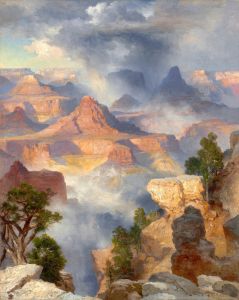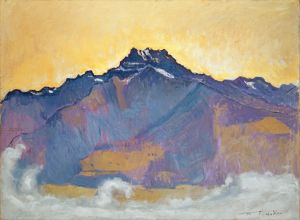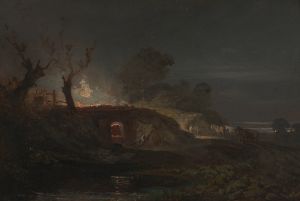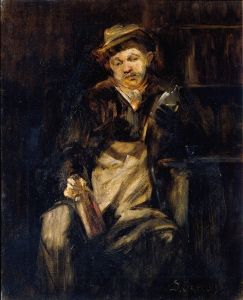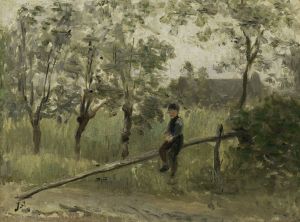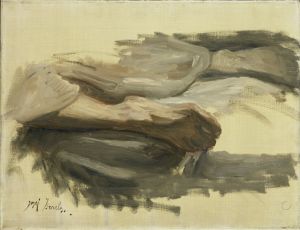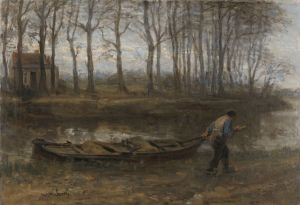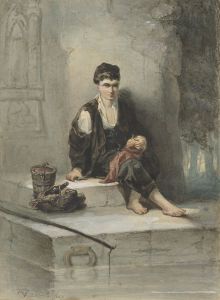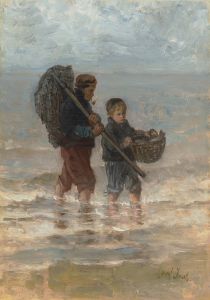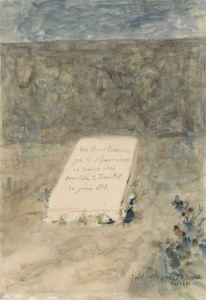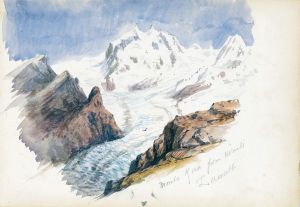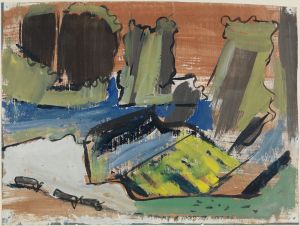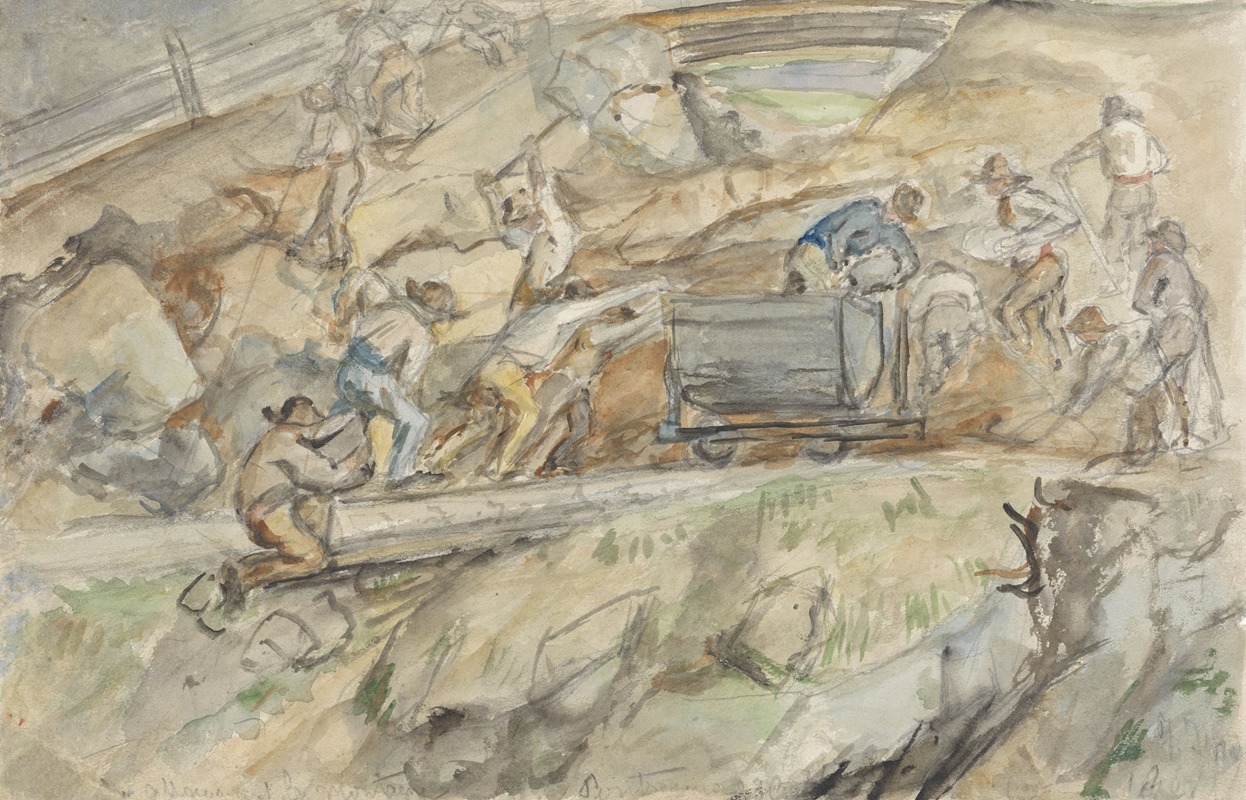
Steengroeve bij Pontresina
A hand-painted replica of Jozef Israëls’s masterpiece Steengroeve bij Pontresina, meticulously crafted by professional artists to capture the true essence of the original. Each piece is created with museum-quality canvas and rare mineral pigments, carefully painted by experienced artists with delicate brushstrokes and rich, layered colors to perfectly recreate the texture of the original artwork. Unlike machine-printed reproductions, this hand-painted version brings the painting to life, infused with the artist’s emotions and skill in every stroke. Whether for personal collection or home decoration, it instantly elevates the artistic atmosphere of any space.
Jozef Israëls was a prominent Dutch painter associated with the Hague School, a group of artists known for their realistic and often somber depictions of rural life in the Netherlands during the late 19th century. Israëls was born on January 27, 1824, in Groningen, Netherlands, and he became one of the most influential painters of his time, often compared to the French realist painter Jean-François Millet.
"Steengroeve bij Pontresina" is one of the works attributed to Jozef Israëls. The title translates to "Quarry near Pontresina," indicating that the painting likely depicts a scene from the region around Pontresina, a village in the Engadin valley in Switzerland. This area is known for its stunning alpine landscapes and might have provided a picturesque setting for Israëls' work.
Israëls was known for his ability to capture the essence of his subjects with a deep sense of empathy and realism. His works often focused on the lives of fishermen, farmers, and laborers, portraying them with dignity and respect. Although specific details about "Steengroeve bij Pontresina" are limited, it can be inferred that the painting might reflect Israëls' interest in the daily lives and environments of working people, consistent with his other works.
The Hague School, to which Israëls belonged, was influenced by the French Barbizon School and emphasized painting en plein air, or outdoors, to capture natural light and atmosphere. This approach allowed artists like Israëls to create works that were both realistic and atmospheric, often with a muted color palette that conveyed the mood of the scene.
Israëls' technique was characterized by loose brushwork and a focus on the play of light and shadow, which he used to create depth and emotion in his paintings. His ability to convey the inner lives of his subjects made his work resonate with viewers, earning him a reputation as a master of genre painting.
Throughout his career, Israëls received numerous accolades and his works were exhibited widely, both in the Netherlands and internationally. He was a member of several prestigious art societies and his influence extended to many younger artists of his time.
While specific exhibitions or collections featuring "Steengroeve bij Pontresina" are not well-documented, Israëls' works are held in major museums around the world, including the Rijksmuseum in Amsterdam and the Van Gogh Museum, among others. His legacy as a leading figure of the Hague School and his contributions to 19th-century art continue to be celebrated.
In summary, while detailed information about "Steengroeve bij Pontresina" is scarce, Jozef Israëls' reputation as a skilled and empathetic painter provides context for understanding the potential themes and style of the painting. His focus on realism and the human condition, combined with his technical skill, make his works enduringly significant in the history of art.





